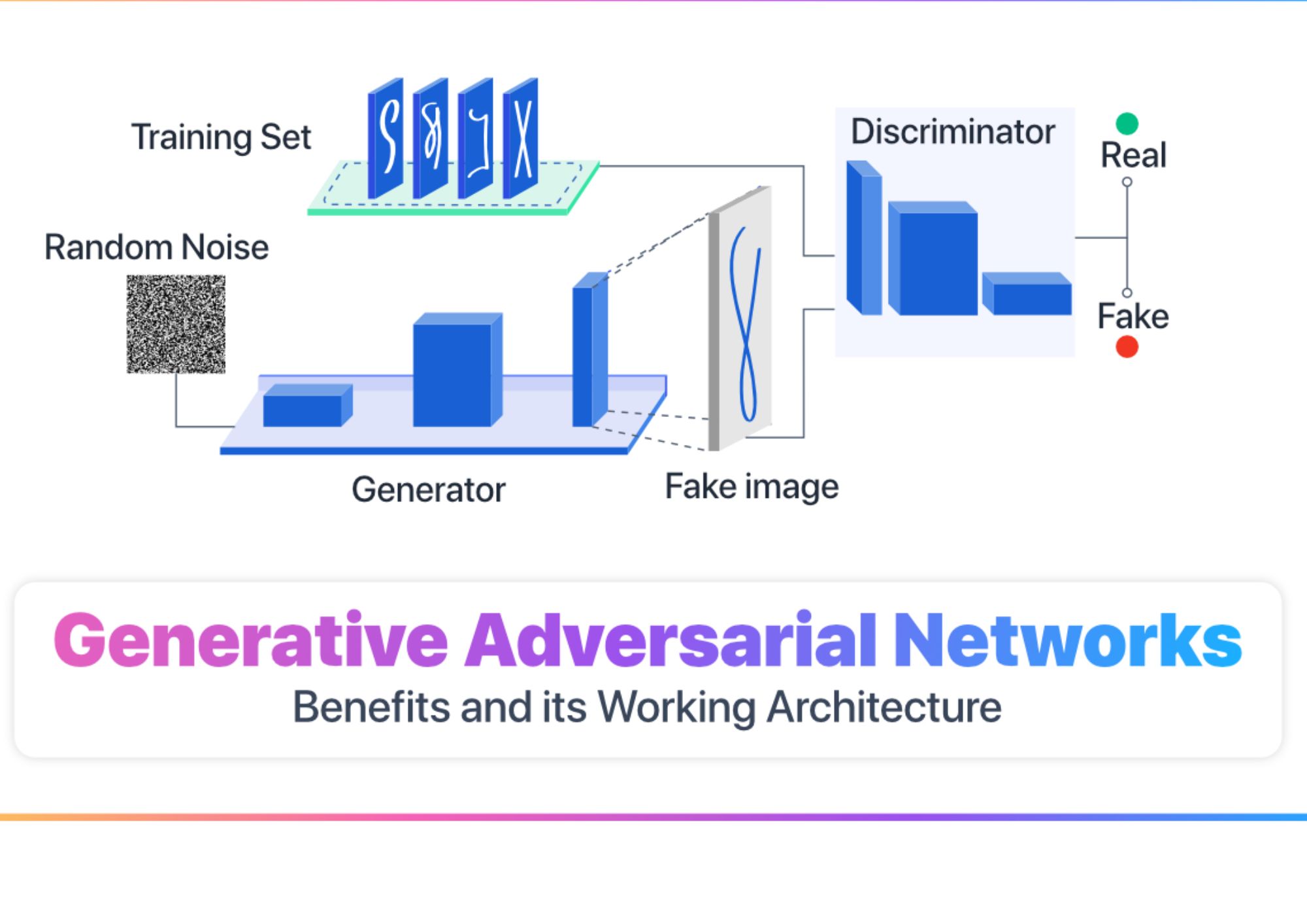Generative Adversarial Networks (GANs) have revolutionized the AI landscape, introducing groundbreaking techniques for synthetic data generation.
By simulating realistic data, GANs propel AI creativity and advance deep learning innovation. In this comprehensive guide, we will explore the inner workings of GANs, how they generate synthetic data, and their wide-ranging applications.
So, let’s dive into the captivating world of GANs!
Section 1: Generative Adversarial Networks – A Quick Overview
GANs are a class of unsupervised learning algorithms in deep learning, proposed by Ian Goodfellow and his colleagues in 2014.
These networks consist of two main components: a generator and a discriminator.
The generator produces synthetic data, while the discriminator evaluates its authenticity.
The two components engage in a continuous battle,
- Generator – tries to create realistic data
- Discriminator – tries to distinguish between real and synthetic samples.
This adversarial relationship results in high-quality synthetic data generation.
Section 2: GANs Architecture and Functioning
GANs consist of two neural networks, the generator (G) and the discriminator (D), which are trained simultaneously. Let’s explore their roles in more detail:
Generator (G)
The generator is responsible for creating synthetic data. It takes random noise as input and generates data resembling the target distribution. Its objective is to deceive the discriminator by generating data that is indistinguishable from the real data.
Example code for a generator (Python, using TensorFlow):
import tensorflow as tf
def generator_model():
model = tf.keras.Sequential()
model.add(tf.keras.layers.Dense(128, activation='relu', input_dim=100))
model.add(tf.keras.layers.Dense(256, activation='relu'))
model.add(tf.keras.layers.Dense(512, activation='relu'))
model.add(tf.keras.layers.Dense(1024, activation='relu'))
model.add(tf.keras.layers.Dense(784, activation='tanh'))
return model
Discriminator (D)
The discriminator’s role is to distinguish between real and synthetic data. It is fed both real data samples and the generator’s output, then learns to classify them as real or fake.
Example code for a discriminator (Python, using TensorFlow):
import tensorflow as tf
def discriminator_model():
model = tf.keras.Sequential()
model.add(tf.keras.layers.Dense(1024, activation='relu', input_dim=784))
model.add(tf.keras.layers.Dense(512, activation='relu'))
model.add(tf.keras.layers.Dense(256, activation='relu'))
model.add(tf.keras.layers.Dense(128, activation='relu'))
model.add(tf.keras.layers.Dense(1, activation='sigmoid'))
return model
Section 3: Synthetic Data Generation and AI Creativity
GANs have opened the door to remarkable AI creativity, as they can generate synthetic data that closely resembles real-world data.
This ability to mimic complex patterns and structures has resulted in numerous applications, including:
Image Synthesis:
GANs can generate high-resolution images that resemble real photographs. For example, NVIDIA’s StyleGAN2 can generate photorealistic images of human faces, animals, and objects.
Data Augmentation
GANs can create additional training data for machine learning models, especially when real data is scarce or expensive to collect. This technique helps improve the performance of models by providing diverse training samples.
Art Generation
GANs can generate unique pieces of art, pushing the boundaries of AI creativity. A famous example is the AI-generated artwork “Portrait of Edmond Belamy,” which was auctioned for $432,500 at Christie’s in 2018.
Video Game Design
GANs can create realistic textures, terrains, and character models for video games, enhancing the gaming experience and reducing the need for manual design.
Drug Discovery
GANs can generate potential drug candidates by simulating molecular structures, accelerating the drug discovery process and reducing costs.
Section 4: Challenges and Limitations
Despite their remarkable capabilities, GANs also face challenges and limitations:
Mode Collapse:
GANs can suffer from mode collapse, where the generator produces only a limited variety of samples, limiting the diversity of generated data.
Training Stability
GANs can be difficult to train due to their adversarial nature, leading to unstable training dynamics and potential convergence issues.
Evaluation Metrics
Assessing the quality of generated samples can be challenging, as there are no clear-cut evaluation metrics for GANs.
Section 5: Future Prospects and Deep Learning Innovation
GANs have sparked deep learning innovation by enabling the generation of realistic synthetic data.
As GAN research progresses, we can expect to see improvements in training stability, evaluation metrics, and overall performance.
The continuous development of GANs will undoubtedly lead to new applications, further fueling AI creativity and transforming industries.
Conclusion: GANs – A New Era of Synthetic Data Generation
Generative Adversarial Networks (GANs) have ushered in a new era of synthetic data generation, fostering AI creativity and deep learning innovation.
By enabling the creation of realistic data, GANs have found diverse applications, from image synthesis to drug discovery. Despite some limitations, GANs continue to evolve, unlocking new possibilities and driving AI advancements.
So, keep an eye on GANs – they’re reshaping the world of AI!
Thank you for reading our blog, we hope you found the information provided helpful and informative. We invite you to follow and share this blog with your colleagues and friends if you found it useful.
Share your thoughts and ideas in the comments below. To get in touch with us, please send an email to dataspaceconsulting@gmail.com or contactus@dataspacein.com.
You can also visit our website – DataspaceAI



